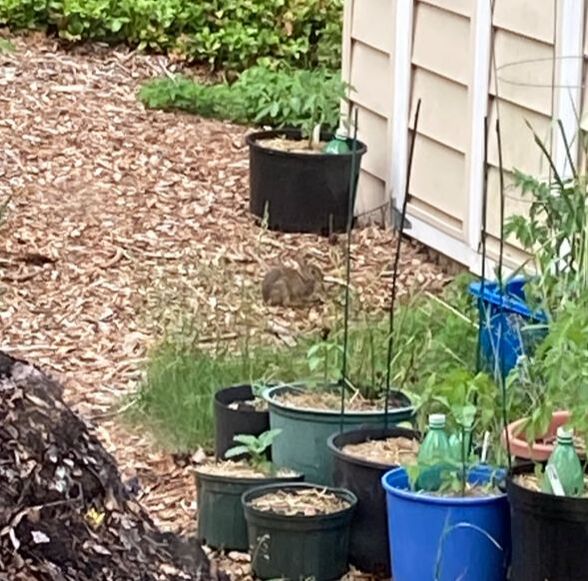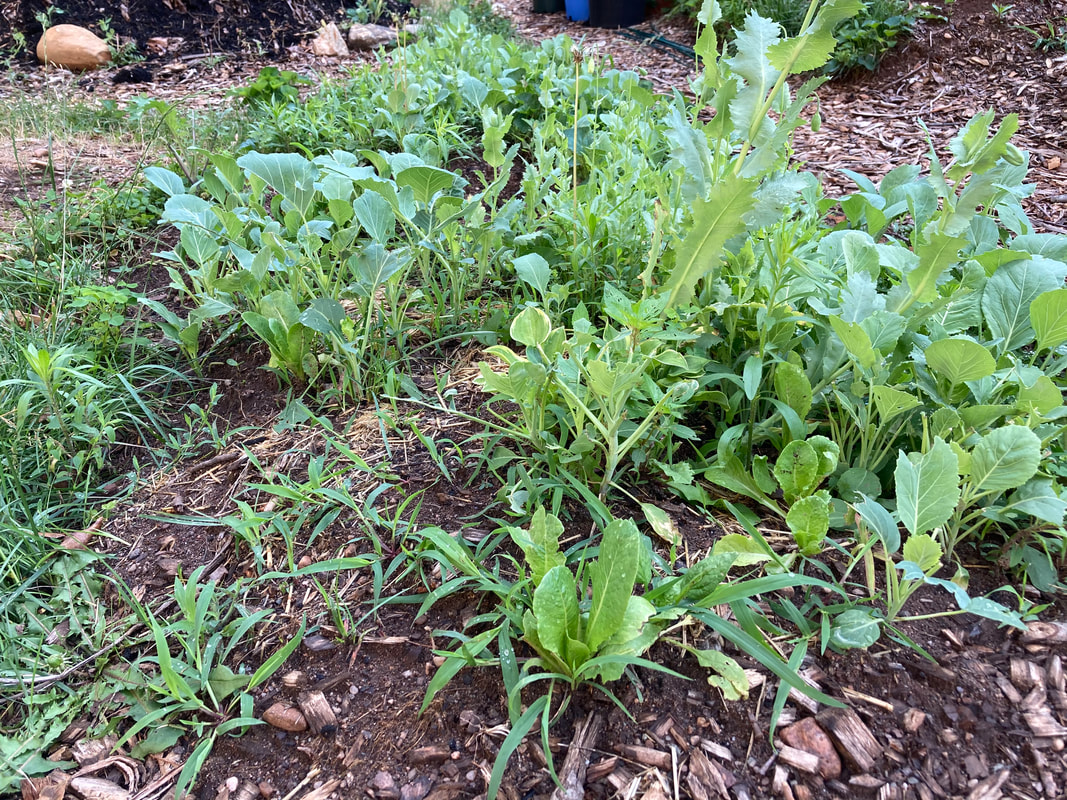|
We had a woodchuck and a rabbit in our yard and I'd like to share how we gardened in a way that allows them to live with us. But come on a little philosophical journey with me before we get into the tips.
I have long believed that my gentleness is weakness. I wear work boots and dress androgynously to look tougher than I am. But at work I don't like doing things like driving trucks onto grass because I see insect holes in the ground and I know how bad compaction is for the roots of plants. There’s a White man who lives in my head and scolds me when I’m being gentle with nature. “Dig that dirt, don’t look at what’s in it. Cut those plants, don't worry about what they are, they’re in our way.” This man speaks with the voice of the world I see around me; fast moving, rough, unsentimental. But I’m not like that. And I’m beginning to put aside my humbleness and realize that gentleness like mine is not wrong. It is, in fact, what we need to protect life on this planet and stop the tailspin towards extinction. I’ve been reading Native American thought books lately and they’ve been opening my eyes to White ways of thought I hadn’t even considered. I had just assumed that the attitude towards nature that I'd absorbed from our dominant culture was the only way to look at things. But you can ask a tree whether or not you can cut it down and listen to the response (a bird nesting in it might answer “no”). You can acknowledge that living things exist in a democracy of species with all creatures being equally as valuable as humans. Which brings me to the woodchuck and rabbit in our yard. I have seen neither around for a few weeks, which genuinely makes me sad. Yes, the woodchuck ate our peas and broccoli, and several kales. Yup, it frustrated us for a moment, but these are native animals on this land and vegetation is their food. Many gardeners are furious at woodchucks. On Facebook gardening forums, people recommend shooting them, often with a joke in the same sentence. But that's not funny. If you casually advocate shooting something that's inconveniencing you, how many steps until you're recommending removing or killing people who are in your way as we've done in our colonial history? Other people trap woodchucks and bring them to a piece of our vanishing wilderness that is not their home. If that's not colonial behavior, I don't know what is, because it's exactly what we did to Native Americans who lived on the land we wanted to live on. People who remove woodchucks in this way are often sheepish when they describe what they've done. If you're slightly embarrassed about it, then you probably did harm. There are things I've done in the yard that I am not proud of. I'm working towards causing no harm. It's a process and we can all work towards becoming more gentle. We have gobbled up most of the wilderness, leaving creatures nowhere to live but next to us. And now we say they can only live there if they do not eat? That is not fair and we have an obligation to share our space with them. The following are tips on how I’ve shared our food with garden visitors.
I miss our woodchuck. My extra collard patch grows tall without him but my heart aches when I think about where he could be and whether he was forcibly removed.
1 Comment
Jill
7/16/2020 02:25:52 pm
Loved this piece! I have vole tunnels into my raised beds. I'm hoping they help feed the juvenile redtails in the neighborhood.
Reply
Leave a Reply. |
Categories
All
Archives
August 2021
|


 RSS Feed
RSS Feed